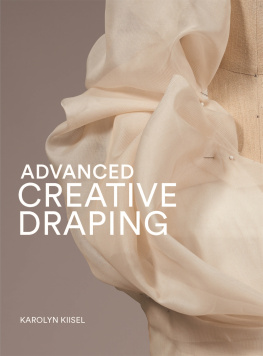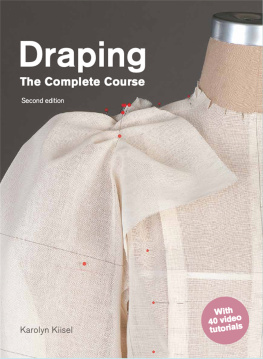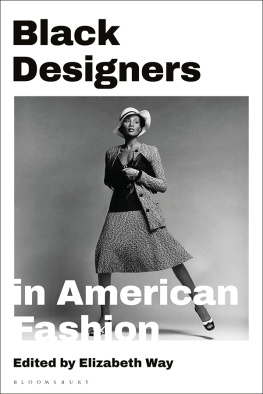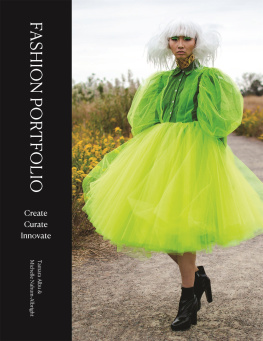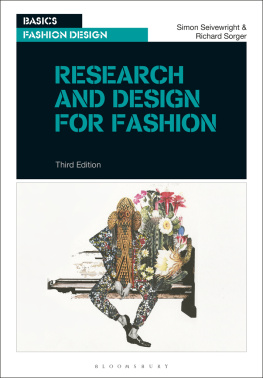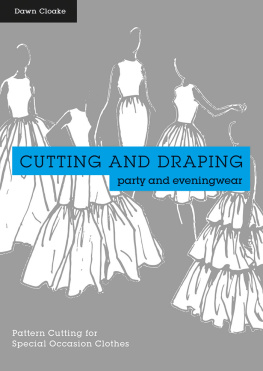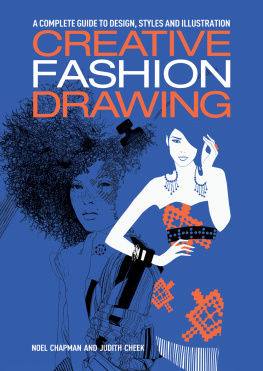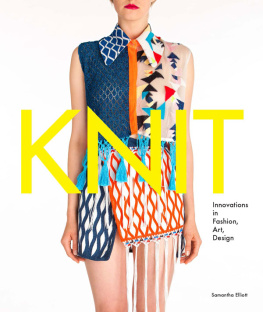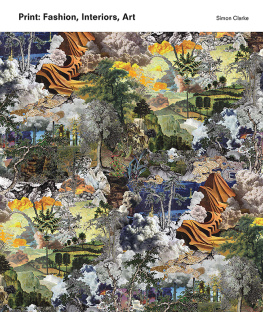Contents
Guide
ADVANCED
CREATIVE
DRAPING

First published in Great Britain in 2022 by
Laurence King Student & Professional
An imprint of Quercus Editions Ltd
Carmelite House
50 Victoria Embankment
London EC4Y 0DZ
An Hachette UK company
Copyright 2022 Karolyn Kiisel
The moral right of Karolyn Kiisel to be identified as the author of this work has been asserted in accordance with the Copyright, Designs and Patents Act, 1988.
All rights reserved. No part of this publication may be reproduced or transmitted in any form or by any means, electronic or mechanical, including photocopy, recording, or any information storage and retrieval system, without permission in writing from the publisher.
A CIP catalogue record for this book is available from the British Library
TPB ISBN 978-1-91394-722-9
Ebook ISBN 978-1-52942-266-5
Quercus Editions Ltd hereby exclude all liability to the extent permitted by law for any errors or omissions in this book and for any loss, damage or expense (whether direct or indirect) suffered by a third party relying on any information contained in this book.
Design by The Urban Ant Ltd
ADVANCED
CREATIVE
DRAPING
KAROLYN KIISEL
LAURENCE KING PUBLISHING
An imprint of Quercus Editions Ltd
www.laurenceking.com/student/

Contents
For related study material and videos please visit www.laurenceking.com
INTRODUCTION:
Creative Inspiration through Draping
Where does creative inspiration come from? How does it arise in designers and how is it expressed in their work? Advanced Creative Draping explores how fashion and costume designers imaginations can be stimulated in the exercise of their craftspecifically, through the hands-on practice of draping.
The goal is to design from a conceptual base, drawing from your own ground of aesthetic experience to produce clothes that are rich, meaningful, and artfully made. Creative draping nurtures originality and enables an individual signature style to develop.
The draping approaches presented here are intended to stimulate creative inspiration and generate design concepts while also providing instruction in a variety of specific techniques and skills for realizing those ideas. In the first seven chapters of this book, different draping techniques will be systematically explored through visual examples, studies, exercises, and projects. The final two chapters, Draping for Costume Design and Draping the Heirloom Design, draw on all of these methods.
The insights of our community of designers are included in stories and quotations. We build on a wealth of experience. Clothing design and construction have evolved over centuries, and many designs and techniques used long ago are still valid.
Research informs creativity. Use of cultural and historical references gives us a sense of how the old interacts with the new, enabling us to forge new territory. Deepening awareness of ones own context is also research; it illuminates the way you, personally, fit into the creative progression of your design path.
Understanding ergonomics, the study of fit and movement, is an essential element of high-quality design. Included here are sections on fitting and self-assessment. Couture-quality workmanship takes much experience to master, but an understanding and appreciation of the depth of skill involved in superior craftsmanship is a good beginning.

Because draping is intuitive, the designers personal aesthetic emerges organically.
Projects here present theories and principles of advanced construction such as advanced tailoring techniques, draping with textural embellishments, and the use of support understructures. An understanding of these will help you translate your drapes into working patterns and finished apparel of quality. While some of the exercises are intended to be followed closely, others are simply guideposts to help you while doing an original design project in parallel.
Eye, hand, and heart
Mastering the designers essential skill of draping requires schooling your eye to recognize balance and good composition, training your hand to dexterity in cutting, pinning and combining complex curves, and using your heart to strengthen individual expression.
Developing what is often called a good eye in design takes practice, study, and analytical skills. Thoughtful and critical observation can cultivate a discerning eye and a refined taste level. Draping has the great advantage of giving immediate visual feedback, as the contours of a garment can be seen taking shape during the process.
Training the hand can be compared to practicing a musical instrument. The aim is to reach the point where technical skills become so natural that their importance recedes, and creative, subconscious decision-making emerges.
For a contemporary designer, finding the heart of your creativity is of utmost importance. To work successfully in this highly competitive field, a designer must have a unique, individual style. New fashion students may feel they must define their personal style right away, but it can take time and patience to develop. The freedom that draping allows nurtures this process in a natural, organic way.

Madame Alix Grs was formally trained as a sculptor. She opened her first couture house in Paris in 1932, applying sculpting techniques to her fabric forms. Her signature pleated goddess gowns were all done by hand, typically on live models, draping the cloth so the body shaped the dress. Here, a dress for Images de France in 1942 is being draped with silk jersey. This drape was lightly held together by a few pins, then vanished like a dream after being captured in this photograph.
The skill of draping is invaluable for discovering this personal aesthetic, as refining a drape and arriving at a balance is a very personal process. Working hands-on with fabrics to convey an emotion, mood, or concept allows your personal style to take flight, expressing itself in a continuous stream of decisions about proportion, scale, and volume. Observing the subtleties of line, shape, and silhouette strengthens visualization skills.
Draping intuitively, and developing the ability to lose yourself in a creative flow is essential to accessing the deepest well of inspiration, helping you as a designer to find your own voice.
Draping with muslin
A simple length of natural muslin, the most humble but fundamental of tools, is our blank canvas, our starting point. A swirling collage of inspirations comes into focus, an idea begins to crystallize, and as the draping begins, a concept becomes physical.
The designers medium is textiles, but while draping, muslin is our medium. There is a purity to muslin that allows for a focus and concentration on the forms, shapes, and silhouettes being created, the lines and curves being defined.

